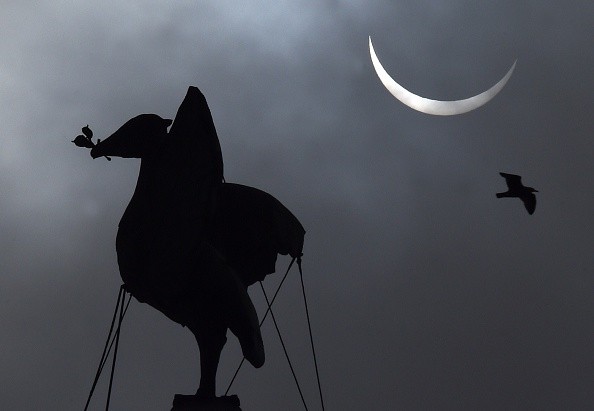A partial solar eclipse will unfold this Tuesday, allowing astronomy lovers and stargazers to witness the amazing sight.
The eclipse would be visible in portions of the Northern Hemisphere.
October has been an exciting month for stargazers. During the first week, the Full Hunter's Moon on October 9, showed a mesmerizing sight from afar.
The name was a term associated with the year of hunting.
Meanwhile, the Orionid Meteor Shower emerged on October 20, 20, and October 21, giving a magnificent sight of the meteor showers.
According to the report published in Phys.Org, the IMCCE institute of France's Paris Observatory said that the partial solar eclipse is set to start in Iceland (0858 GMT) and end at India's coast (1302 GMT).
The report added that the partial solar eclipse would cross North Africa, Europe, and the Middle East, adding that Tuesday's eclipse would be the 16th century's partial solar eclipse.
Meanwhile, France's Paris Observatory explained that the eclipse would be partial, and the Moon's shadow would not show touching the Earth's surface, noting that the Moon, around 82%, would cover the Sun.
Paris Observatory astronomer Florent Deleflie told AFP that the coming partial solar eclipse would not be spectacular, but the eclipse serves as an important astronomy event for astronomers.
Ultimately, the report advised that astronomy lovers who will witness the partial solar eclipse should be cautious not to look at the Sun as the prolonged exposure could result in eye damage.
According to NASA, a solar eclipse happens as the Moon orbits the Sun and Earth.
It allows the eclipse to emerge, and the Moon casts a shadow. The Moon could block the Sun's light, unable to reach Earth.
Types of solar eclipse

NASA added that solar eclipse has three main types: total solar eclipse, partial solar eclipse, and annular solar eclipse.
- A partial solar eclipse emerges as the Sun shows a small dark shadow visible to its surface when the Earth, Moon, and Sun are not aligned.
- Meanwhile, the total solar eclipse emerges when the Earth, Sun, and Moon are in the direct line, allowing astronomy lovers to witness a dark sky.
- Ultimately, the Annular solar eclipse occurs when the Moon appears to be farthest from Earth, which the Moon appears to be smaller.
Moreover, NASA explained that studying eclipses are important. Solar eclipses allow scientists to look into the Sun's corona using advanced instruments.
Also Read : Hunter's Moon Shines Brightly in the Sky
Viewing the Partial Solar Eclipse
Although it would be a partial solar eclipse, it is a golden moment for astronomy events. The report added to be cautious during the eclipse and avoid looking at the Sun as it can damage your eyes.
- Set a good location to view the amazing sight, noting the important time of the eclipse.
- Wear protective sunglasses that could be enough to protect your eyes.
- On Online, you can also watch the partial solar eclipse in videos if you miss it!
- Capture the best moment of the eclipse and share it with your friends.
Related Article : Astronomers Say Eclipse Season to Set After Autumn's First Meteor Shower
For more similar, don't forget to follow Nature World News.
© 2025 NatureWorldNews.com All rights reserved. Do not reproduce without permission.





